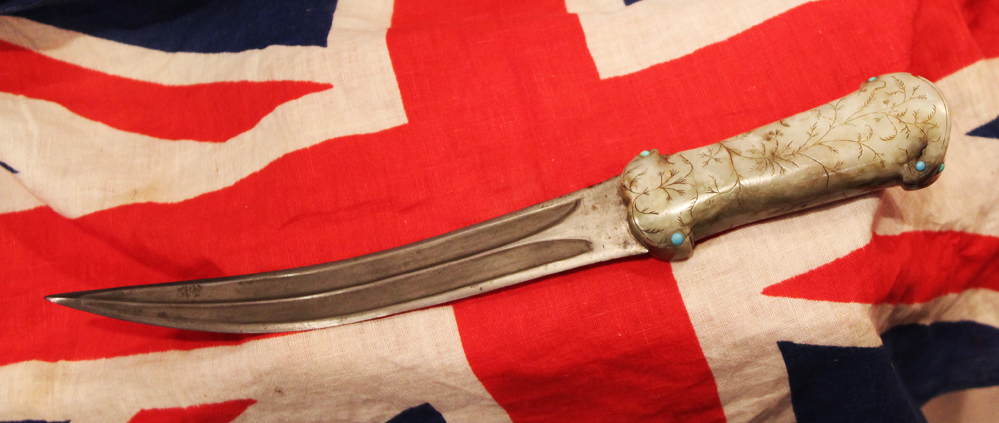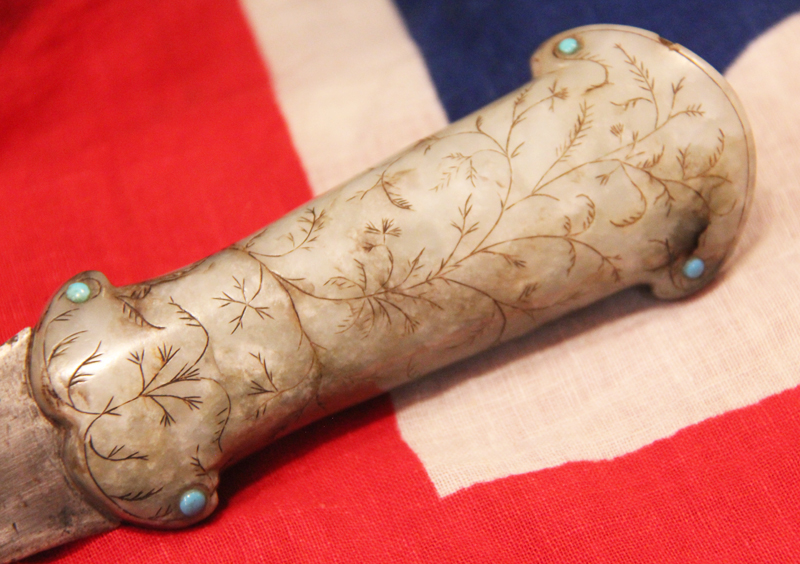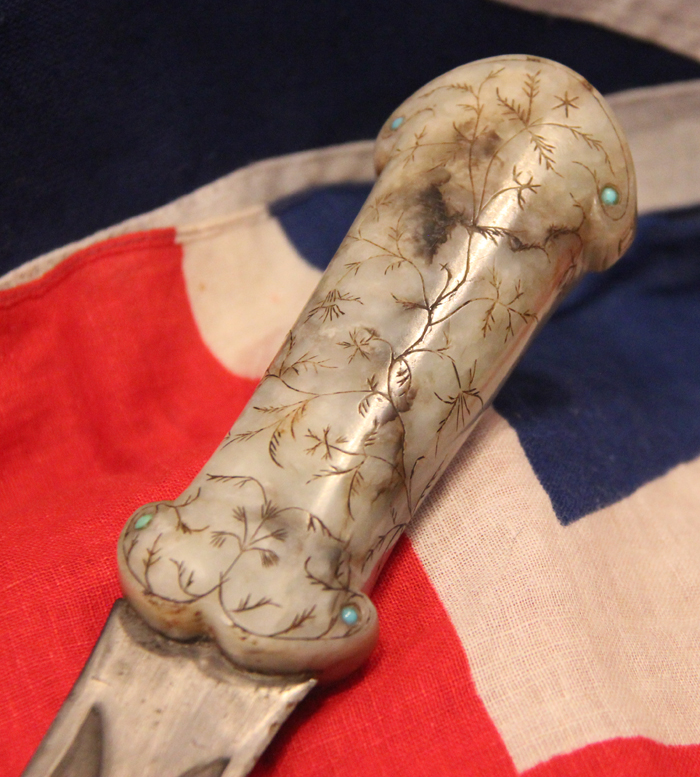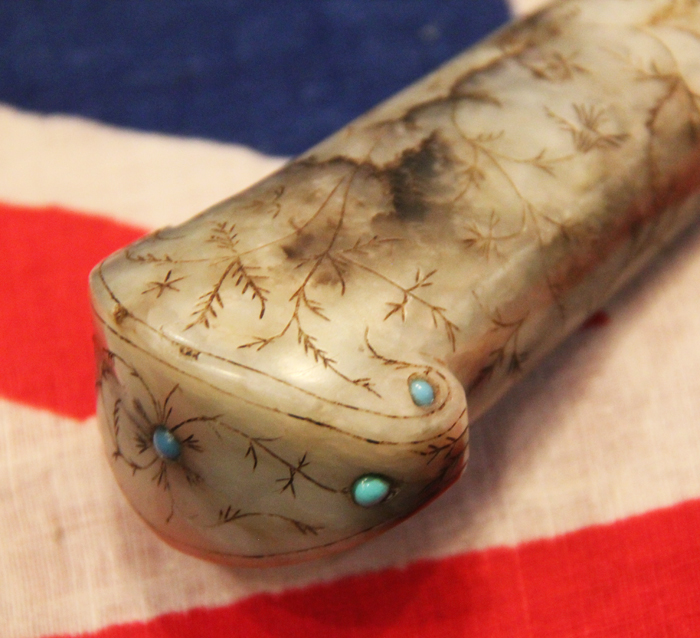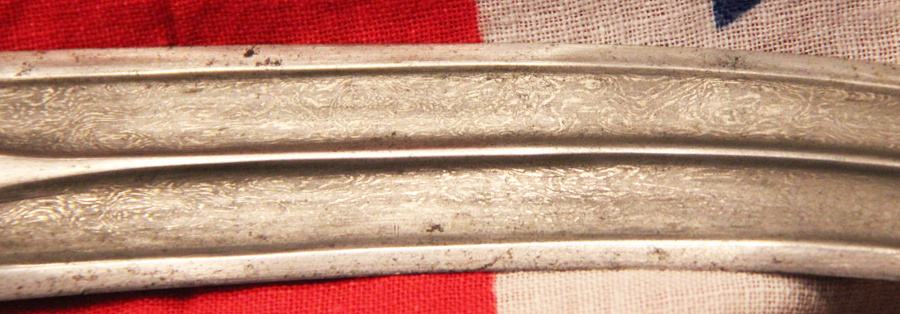A Stunning, Moghul Indo Persian Khanjar Dagger, With Carved Jade, Inlaid with Cabochon Turquoise Handle, With 'Tiger Tooth', Wootz Steel, Double Fullered And Ribbed, Double Edged Blade
With wootz Damascus blade. An 18th to 19th century dagger khanjar, with a curved double edged watered wootz blade 24cms long, cut with a pair of deep fullers with medial ridge, mounted with a fine one piece jade hilt engraved and incised overall with foliage and inlaid with cabochon turquoise at the corners and on the pommel. The Mughal (or Moghul) Empire was an early-modern empire in South Asia. For some two centuries, the empire stretched from the outer fringes of the Indus basin in the west, northern Afghanistan in the northwest, and Kashmir in the north, to the highlands of present-day Assam and Bangladesh in the east, and the uplands of the Deccan plateau in South India.
The Mughal empire is conventionally said to have been founded in 1526 by Babur, a warrior chieftain from what today is Uzbekistan, who employed aid from the neighboring Safavid and Ottoman empires to defeat the Sultan of Delhi, Ibrahim Lodhi, in the First Battle of Panipat, and to sweep down the plains of Upper India. The Mughal imperial structure, however, is sometimes dated to 1600, to the rule of Babur's grandson, Akbar. This imperial structure lasted until 1720, until shortly after the death of the last major emperor, Aurengzeb, during whose reign the empire also achieved its maximum geographical extent. Reduced subsequently, especially during the East India Company rule in India, to the region in and around Old Delhi, the empire was formally dissolved by the British Raj after the Indian Rebellion of 1857.
Although the Mughal empire was created and sustained by military warfare,it did not vigorously suppress the cultures and peoples it came to rule, but rather equalized and placated them through new administrative practices, and diverse ruling elites, leading to more efficient, centralised, and standarized rule.The base of the empire's collective wealth was agricultural taxes, instituted by the third Mughal emperor, Akbar. These taxes, which amounted to well over half the output of a peasant cultivator, were paid in the well-regulated silver currency, and caused peasants and artisans to enter larger markets.
The relative peace maintained by the empire during much of the 17th century was a factor in India's economic expansion.Burgeoning European presence in the Indian ocean, and its increasing demand for Indian raw- and finished products, created still greater wealth in the Mughal courts. There was more conspicuous consumption among the Mughal elite, resulting in greater patronage of painting, literary forms, textiles, and architecture, especially during the reign of Shah Jahan. The Taj Mahal, which is described as, "The jewel of Muslim art in India, and one of the universally admired masterpieces of the world's heritage.
Code: 22507
3995.00 GBP


